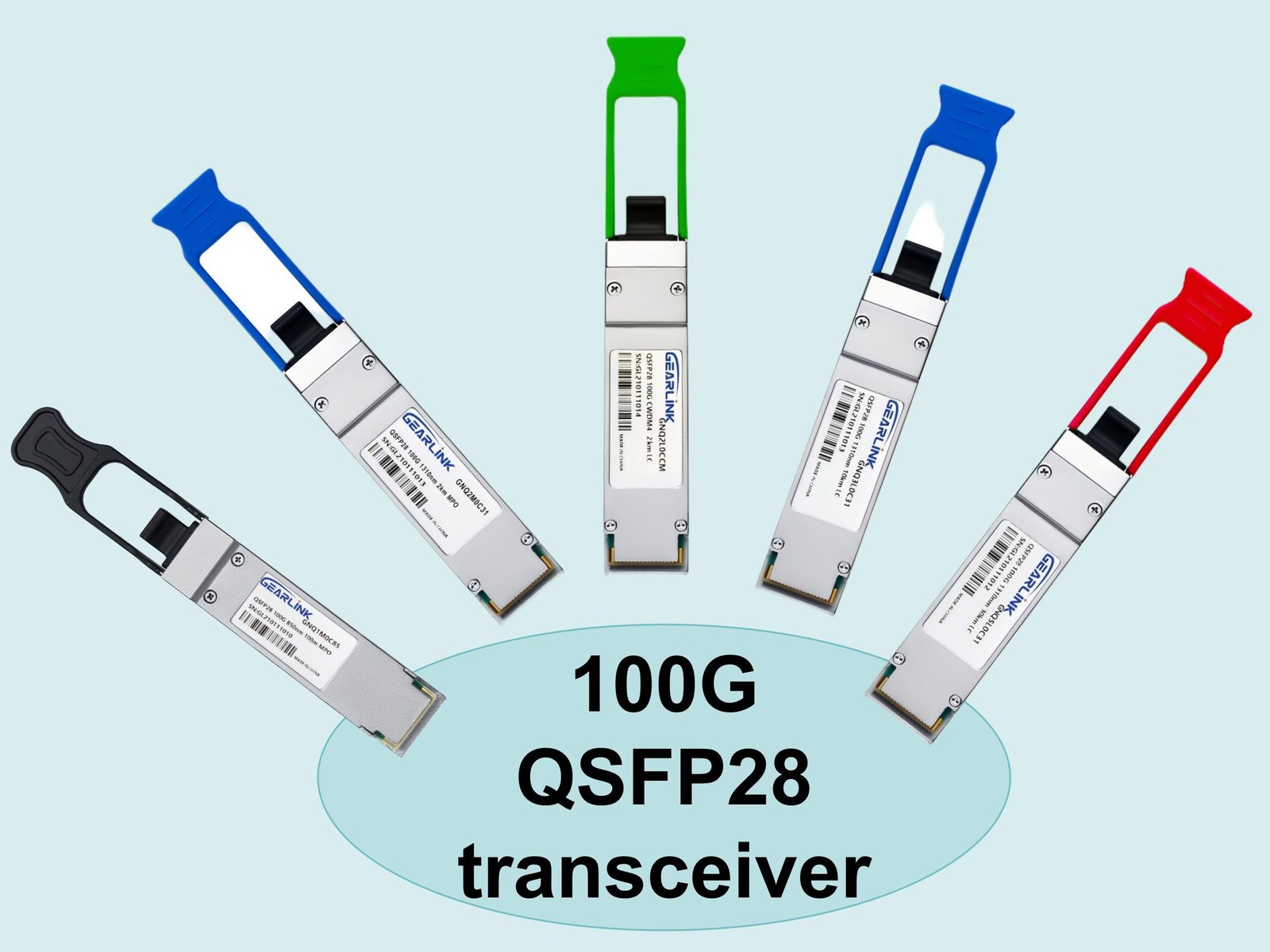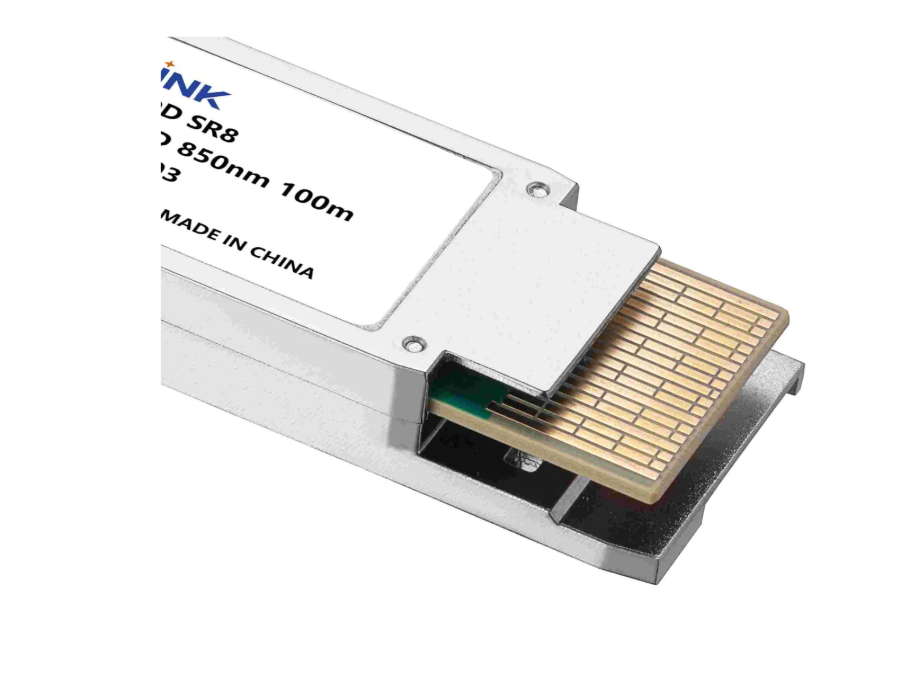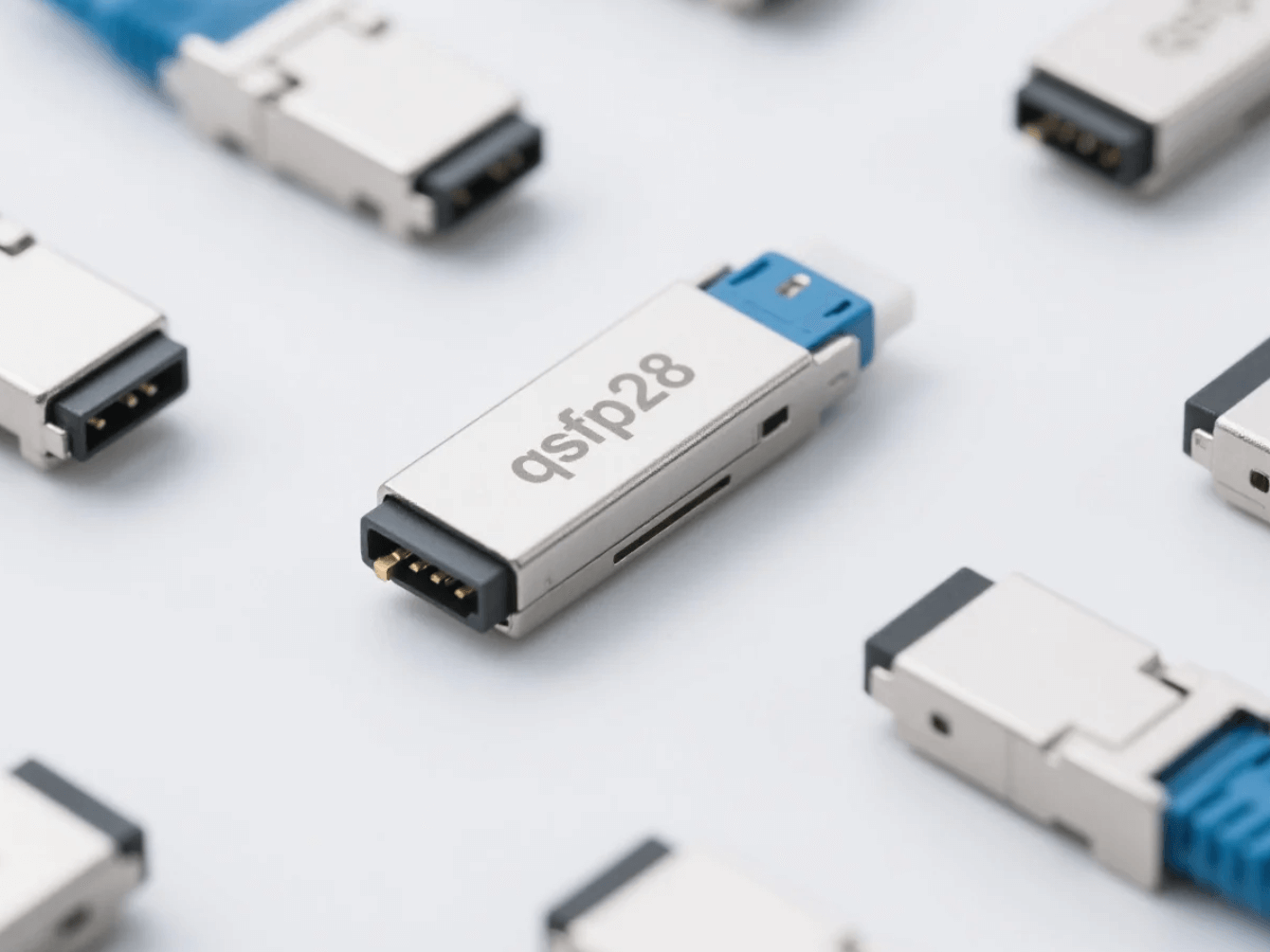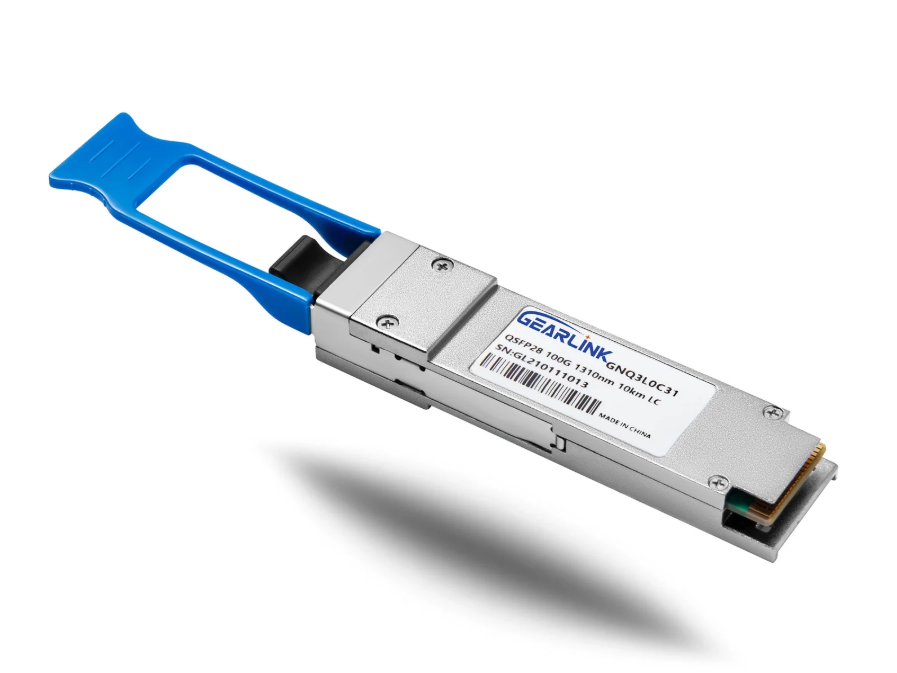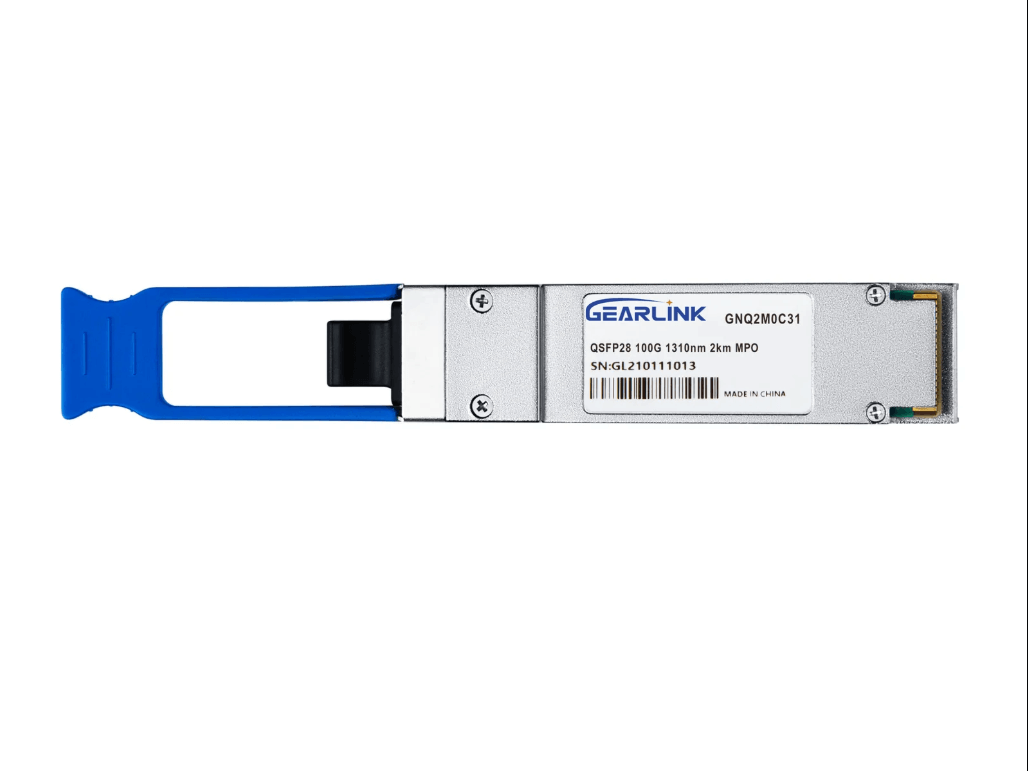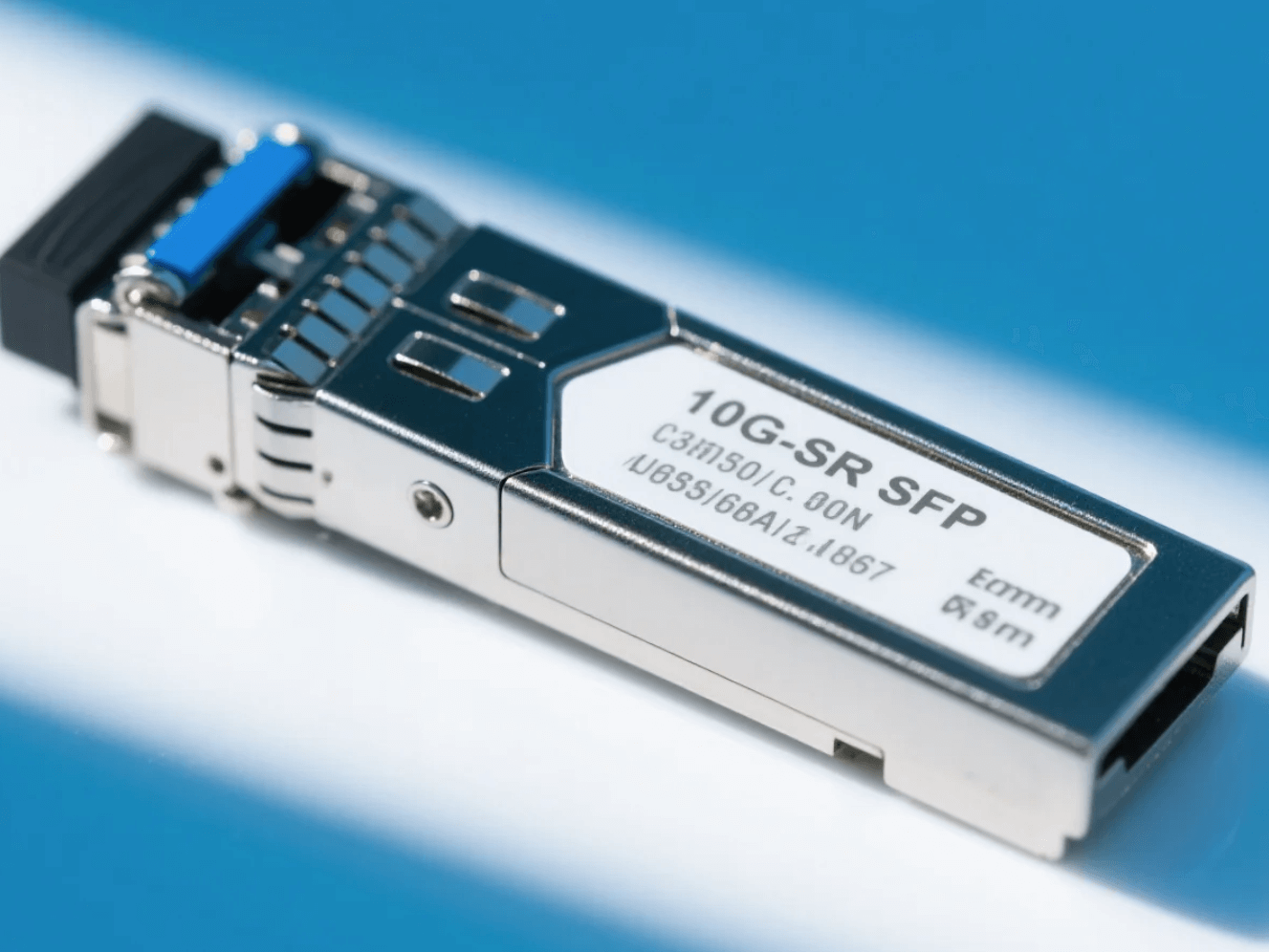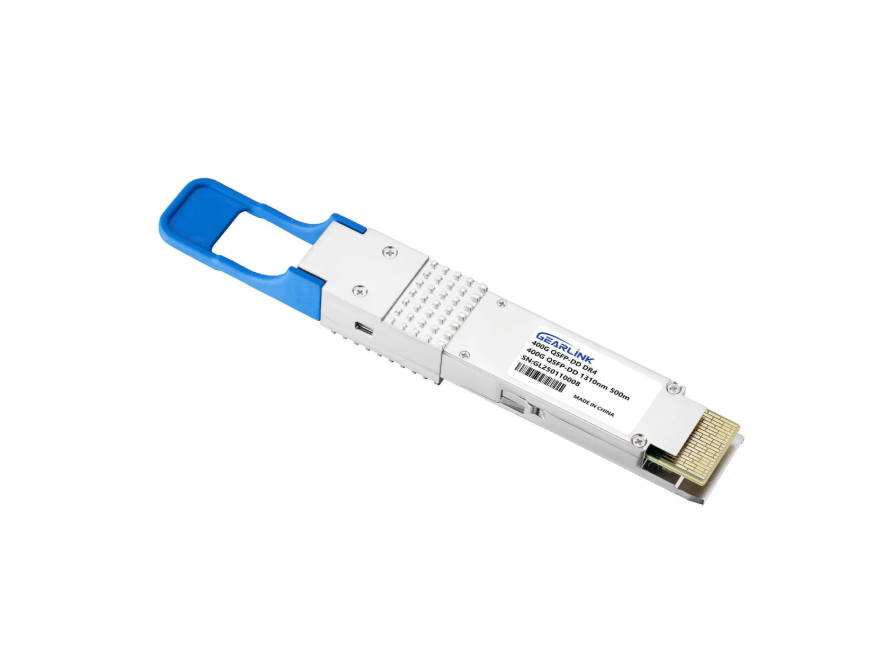If you’re exploring high-speed networking modules, you’ve likely come across the terms QSFP28, 100G transceiver and QSFP28 transceiver. These keywords are tightly related: the form factor QSFP28 refers to the module packaging standard that supports up to 100 Gbps in a compact design. In practice a 100G transceiver almost always means a 100 Gbps module in the QSFP28 form-factor. And by extension QSFP28 transceiver likewise refers to that same category of 100G modules in QSFP28 format.
In this article, we’ll walk you through what QSFP28 means, why 100G transceivers are the prevalent choice today, and how QSFP28 transceivers differ and how to pick the right one. We’ll use plenty of transition words to keep the flow smooth and, since we’re in a technical domain, we’ll aim to explain things simply and clearly.
What is QSFP28 and how does it fit into the 100G transceiver landscape?
Defining QSFP28 as a form factor
The term QSFP28 stands for Quad Small Form-factor Pluggable 28. “Quad” means four electrical lanes, “28” indicates each lane is rated up to 28 Gbps (so four lanes can deliver up to ~100 Gbps).
Thus, a QSFP28 module is a hot-pluggable transceiver that supports 100G Ethernet or similar high-speed links.
Why QSFP28 is widely used for 100G
Because the QSFP28 packaging allows for compact size, high density (many ports per switch), and relatively low power, it has become the dominant choice for 100G applications.
Accordingly, when someone speaks of a “100G transceiver”, often they mean a QSFP28 version, and when they say “QSFP28 transceiver” they typically refer to the 100G module. In other words the three keywords are almost interchangeable in practice.
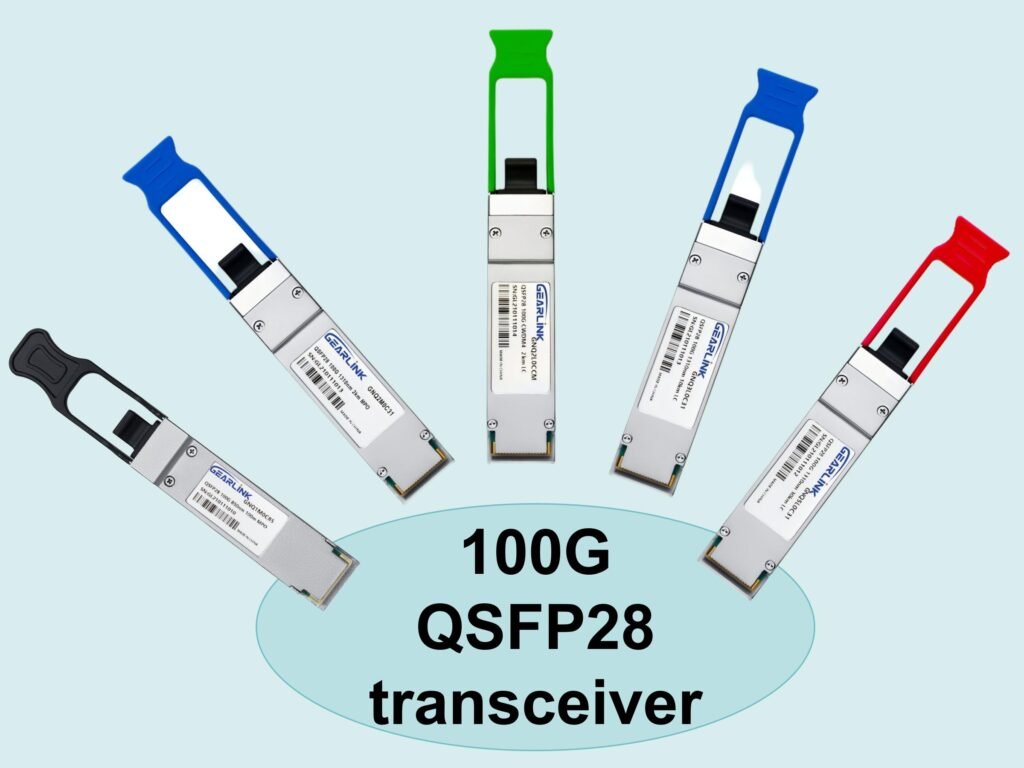
What is a 100G transceiver – and how it equates to QSFP28 transceiver
What a 100G transceiver means
A 100G transceiver is an optical or electrical module designed to support 100 Gigabits per second data rate. It may adopt different packaging, but nowadays the QSFP28 form is most common. For example, “100G QSFP28 transceiver” is typical wording.
Hence, a 100G transceiver is essentially a QSFP28 transceiver in many setups.
Why the term “QSFP28 transceiver” is often used
Because the packaging standard matters (port form factor, footprint, electrical interface), people often say QSFP28 transceiver to emphasise that the module uses the QSFP28 format. Considering that most 100G modules are built in QSFP28 form, the phrase effectively means “100G transceiver in QSFP28 packaging”.
Thus:
QSFP28 → the form factor standard
100G transceiver → the speed / data-rate standard
QSFP28 transceiver → the blend of both (speed + form factor)
Key features of QSFP28 / 100G transceiver / QSFP28 transceiver
Here we list some of the essential characteristics. Because these terms refer essentially to the same device category, we can discuss features together.
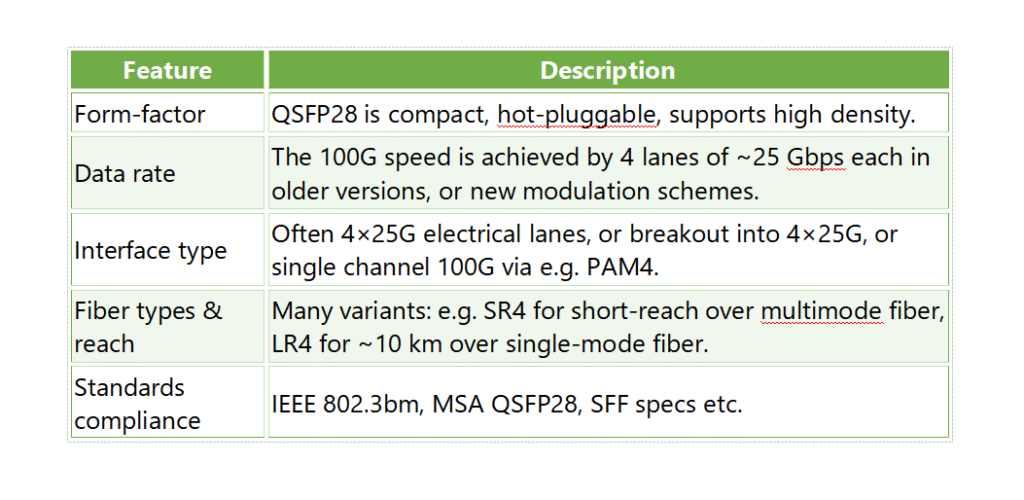
How to choose the right QSFP28 / 100G transceiver / QSFP28 transceiver for your network
Since these keywords refer to devices in the same family, the selecting criteria overlap heavily. Below are the main factors you should consider.
Form-factor compatibility
Make sure the network switch or router has QSFP28 ports (or compatible). If it only supports older QSFP+ for 40G, a QSFP28 module may not be supported.
Speed requirement
If you need 100G, you will pick a 100G transceiver (which will likely be QSFP28). Avoid choosing a lower speed module mistakenly.
Reach and fiber type
Decide whether you need short-reach (SR4 on MMF), long-reach (LR4 on SMF), or other (e.g. PSM4, CWDM4). For example:
SR4: up to ~100 m on OM4 multimode.
LR4: up to ~10 km on single-mode.
Other variants exist (ER4, ZR, etc).
Module features & vendor compatibility
Ensure the module is MSA-compliant, and compatible with your vendor’s switch. Even though QSFP28 is standard, some switches require vendor-approved modules. Also check power consumption and supported temperature range.
Budget and future-proofing
If your network will evolve beyond 100G, you may consider modules that support breakout or future standards. But if your immediate need is 100G, a QSFP28 transceiver is a solid choice.
Why 100G transceiver (QSFP28) is the prevalent choice today
Higher density and lower cost per bit
Because QSFP28 modules allow 100G in the same port footprint as older modules (e.g., 40G QSFP+), you can increase port density and reduce cost per gigabit.
Power efficiency
Modern QSFP28 modules typically consume lower power compared to older wide-form-factor 100G modules (such as CFP).
Industry momentum
Data-centers and high-performance networks are migrating to 100G and beyond; hence the term “100G transceiver” is almost synonymous with “QSFP28 transceiver” in practice.
Common variants of QSFP28 / 100G transceiver / QSFP28 transceiver – what they mean
Here are some of the common suffixes and what they indicate:
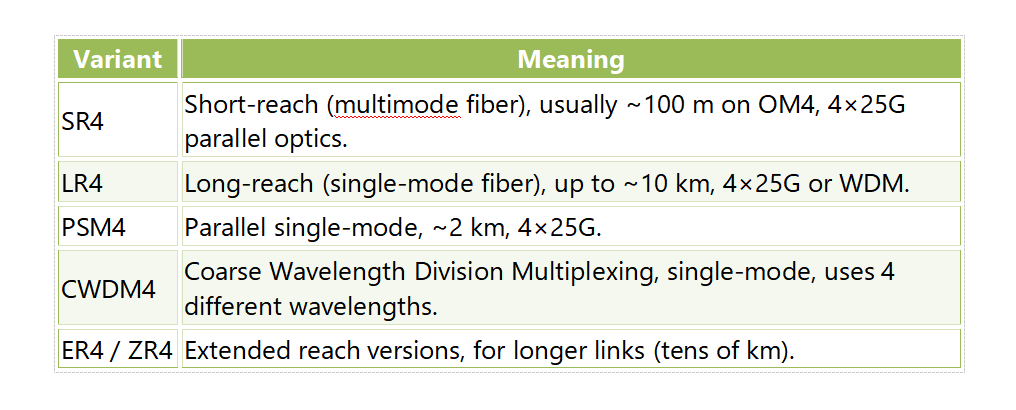
When you select a “100G transceiver” or “QSFP28 transceiver”, you’ll need to pick the right variant for your link distance, fiber type, connector type, etc.
Summary & key take-aways
The keyword QSFP28 refers to the module form-factor standard (Quad, Small Form-factor Pluggable, 28).
A 100G transceiver refers to a transceiver module supporting 100 Gbps speed.
A QSFP28 transceiver typically means a 100G module in QSFP28 packaging (so basically same as above).
Because of that, these keywords overlap heavily and are often used interchangeably in real-world use.
When choosing, focus on form-factor compatibility (QSFP28), speed (100G), reach & fiber type, and variant (SR4/LR4/PSM4/CWDM4).
Using a QSFP28 100G module gives you high density, lower cost per bit, and future readiness in modern networks.
By understanding the relationship among QSFP28, 100G transceiver and QSFP28 transceiver, you will be better equipped to select, deploy and troubleshoot optical modules in your data-communications network.
Related Frequently Asked Questions
What is the difference between a QSFP28 transceiver and a 100G transceiver?
Both refer to modules supporting 100 Gbps speed, but “QSFP28 transceiver” emphasises the QSFP28 form-factor while “100G transceiver” emphasises the speed. In practice the same module may be both.
How do I choose the correct 100G transceiver or QSFP28 transceiver for my network?
You should consider port form-factor (QSFP28), link distance (SR4, LR4 etc), cable type (MMF vs SMF), connector type, compatibility and vendor support.
Is QSFP28 always for 100G speed?
Generally yes — QSFP28 is defined to support 100 Gbps (4×25G lanes or equivalent) in the standard.
What does SR4, LR4 mean for a 100G transceiver (QSFP28)?
These suffixes indicate reach and fiber type: SR4 = short-reach multimode (up to ~100 m), LR4 = long-reach single-mode (~10 km), etc.
Can I use a QSFP28 transceiver in a QSFP+ port?
Not usually — while the physical plug may fit, the port must support the QSFP28 electrical interface and 100G speed; older QSFP+ ports for 40G may not support full functionality.
